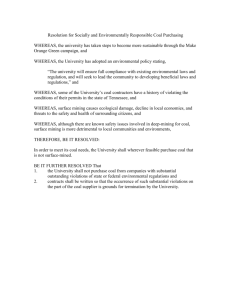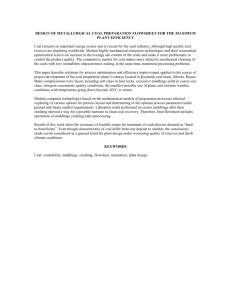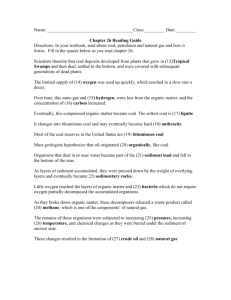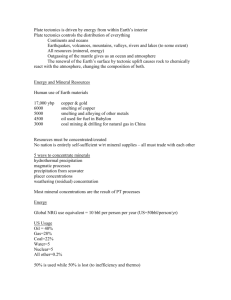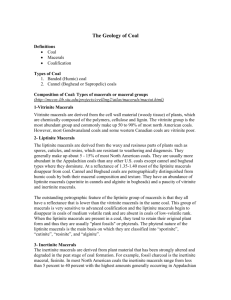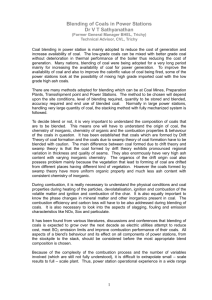geochemical, classification and economic significance of coal in the
advertisement
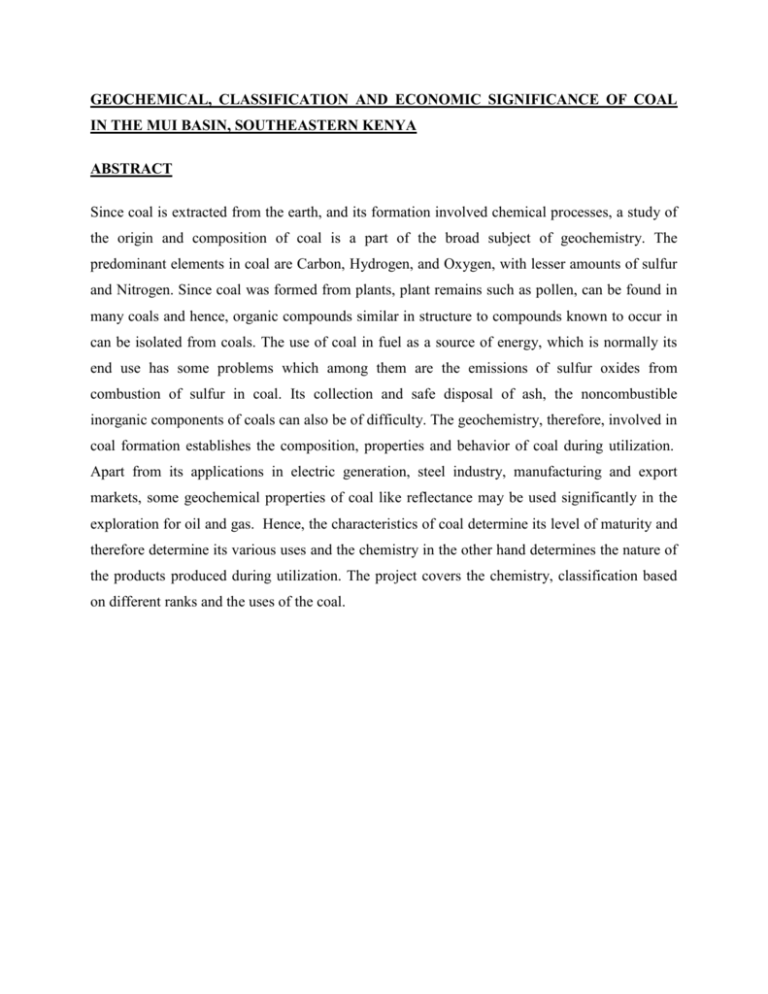
GEOCHEMICAL, CLASSIFICATION AND ECONOMIC SIGNIFICANCE OF COAL IN THE MUI BASIN, SOUTHEASTERN KENYA ABSTRACT Since coal is extracted from the earth, and its formation involved chemical processes, a study of the origin and composition of coal is a part of the broad subject of geochemistry. The predominant elements in coal are Carbon, Hydrogen, and Oxygen, with lesser amounts of sulfur and Nitrogen. Since coal was formed from plants, plant remains such as pollen, can be found in many coals and hence, organic compounds similar in structure to compounds known to occur in can be isolated from coals. The use of coal in fuel as a source of energy, which is normally its end use has some problems which among them are the emissions of sulfur oxides from combustion of sulfur in coal. Its collection and safe disposal of ash, the noncombustible inorganic components of coals can also be of difficulty. The geochemistry, therefore, involved in coal formation establishes the composition, properties and behavior of coal during utilization. Apart from its applications in electric generation, steel industry, manufacturing and export markets, some geochemical properties of coal like reflectance may be used significantly in the exploration for oil and gas. Hence, the characteristics of coal determine its level of maturity and therefore determine its various uses and the chemistry in the other hand determines the nature of the products produced during utilization. The project covers the chemistry, classification based on different ranks and the uses of the coal.






